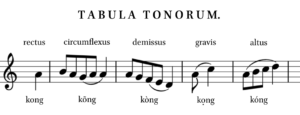Probabilistic Measures for Diffusion of Linguistic Innovation: As Seen in the Usage of Verbal “Nok” in Thai Twitter
The existence of several SNS (social networking service) such as Twitter accelerates the diffusion process of language change. In this paper, we examine the diffusion of the innovative verbal usage of nok in Thai Twitter. We collected more than 25 millions tweets and adopted not only word frequency but also three probabilistic measures of analysis: conditional probability, PMI and cosine similarity of word embeddings. The result of these three probabilistic measures show the stability of the innovation regardless of decrease of word frequency. These facts support the idea that the innovation nok is lexically established in Thai language. Most importantly, it shows that the three probabilistic measures can be used to quantify diffusion of linguistic innovation regardless of its polysemy.


